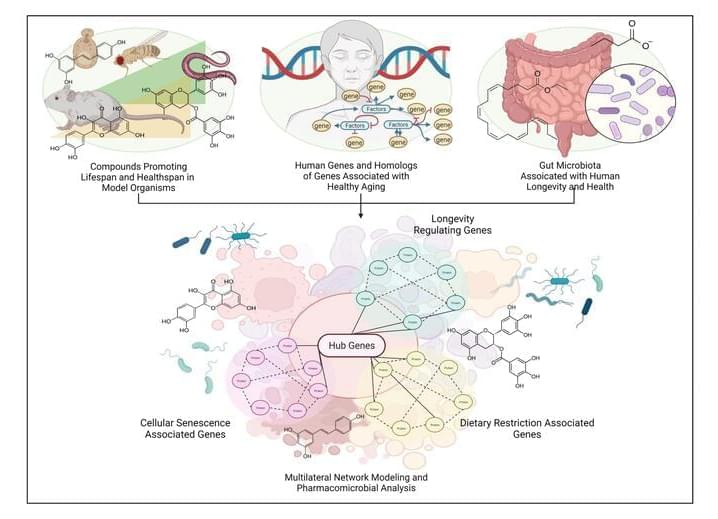A “grand unifying theory” of brain ageing suggests malfunctioning mitochondria might be to blame for Alzheimer’s and other brain conditions. And this new avenue of exploration already has some potential therapies at the ready.



Previously Fahy has reported as much as a 15 year epigenetic clock reset. Again though, this won’t get you beyond your maximum natural limit, but younger and healthier now leads to the next bridge.
Dr Greg Fahy talks about the thymus magic. What are the out of expectation benefits of reprogramming our thymus(Not TRIIM or TRIIM-X) in this short clip.
Gregory M. Fahy is a cryobiologist and biogerontologist, and is also Vice President and Chief Scientific Officer at Twenty-First Century Medicine, Inc. Fahy is the world’s foremost expert in organ cryopreservation by vitrification. Fahy introduced the modern successful approach to vitrification for cryopreservation in cryobiology and he is widely credited, along with William F. Rall, for introducing vitrification into the field of reproductive biology.
Fahy is also a well-known biogerontologist and is the originator and Editor-in-Chief of The Future of Aging: Pathways to Human Life Extension, a multi-authored book on the future of biogerontology. He currently serves on the editorial boards of Rejuvenation Research and the Open Geriatric Medicine Journal and served for 16 years as a Director of the American Aging Association and for 6 years as the editor of AGE News, the organization’s newsletter.
=*=*=*=*=*=*=*=*=*=*=*=*=*=*=*=*=*=*=*=*=*=*=*=*=*

My mum was due to celebrate a century of life and looking forward to getting her card from the Queen. She’d been living in an aged-care facility which had been through multiple lockdowns due to Covid. Our family started preparations for her birthday party; “hold the date” cards were sent.
On Mum’s behalf, we applied to receive the birthday card from the Queen. But early one night, after another lockdown, my dad rang. “I don’t think she’ll make it to the weekend,” he said. “Come quickly.”
As it happens, she hung on for another 18 days. The palliative nurse explained to my family that this was a time of being, rather than doing. We tried to make Mum feel loved, comfortable and with as little pain as possible as her body prepared to die.

Futurist Ray Kurzweil is predicting that by 2030, microscopic gelbots in our bodies will make it possible to cure disease and live forever. You’re 40 years old, but you’re not Dwayne Johnson; it’s the time in life when your body doesn’t bounce back from a good workout as fast as it used to; when you eat a pizza, it sits with you for longer, and sleeping wrong could jumpstart a week of back pain.
http://cryoprize.info/
https://www.facebook.com/cryoprize.
PLEASE CLICK ON LINK TO DONATE: http://cryoprize.info 3 Minute video detailing our efforts to make organ transplants safer, less costly and more available to those in need by offering a prize, beginning at $50,000, to the first person or group to successfully freeze, and restore to full function, one of several mammalian organs.

There are approximately 30 trillion cells in a human body and our health is predicated on them properly interacting with and supporting each other, with the immune system playing a particularly pivotal role. One of the defining characteristics of aging is a decline in the proper functioning of our immune system. Centenarians, a rare population of individuals who reach 100 years or more, experience delays in aging-related diseases and mortality which suggests their immune systems remain functional into extreme old age.
Led by researchers from Boston University Chobanian & Avedisian School of Medicine and Tufts Medical Center, a new study finds centenarians harbor distinct immune cell type composition and activity and possess highly functional immune systems that have successfully adapted to a history of sickness allowing for exceptional longevity. These immune cells may help identify important mechanisms to recover from disease and promote longevity.
“Our data support the hypothesis that centenarians have protective factors that enable to recover from disease and reach extreme old ages,” said lead author Tanya Karagiannis, Ph.D., senior bioinformatician, Center for Quantitative Methods and Data Science, Institute for Clinical Research and Health Policy Studies at Tufts Medical Center.

Turning genes on and off as easily and predictably as flicking a switch could be a powerful tool in medicine and biotech. A type of technology called a riboswitch might be the key. The Okinawa Institute of Science and Technology (OIST) in Japan, in collaboration with Astellas Pharma Inc., has developed a new toolkit that uses small molecules to control the activity of a piece of synthetic RNA, and ultimately regulate gene expression. The technology, which was described in the Journal of the American Chemical Society, worked in mammalian cell cultures and in mice.
The ability to precisely control whether a gene is turned on or off is expected to lead to more efficient production of compounds that are made using animal cells, and make gene therapy, cell therapy, and regenerative medicine safer.
For genes to be expressed, cells make many RNA copies of a section of DNA. These RNA copies, called transcripts, are then used to make the protein. This can lead to the introduction of additional genes (either as DNA or RNA) into cells, which can then be used to make new proteins for a wide variety of applications.

“You won’t live forever” is a catchphrase which has often been touted and has so far remained the proven truth of life — of humans and almost every other living being on planet earth. But soon, this catchphrase may well become the truth of the past, as humanity steps forward to attain immortality.
A former Google scientist has made a prediction, which if proven right, may redefine human civilisation as we know it. Ray Kurzweil, whose over 85 per cent of 147 predictions have been proven right, has predicted that humans will become immortal by 2029.
The revelation came when the 75-year-old computer scientist dwelled upon genetics, nanotechnology, robotics and more in a YouTube video posted by channel Adagio.

Advances in antiaging drug/lead discovery in animal models constitute a large body of literature on novel senotherapeutics and geroprotectives. However, with little direct evidence or mechanism of action in humans—these drugs are utilized as nutraceuticals or repurposed supplements without proper testing directions, appropriate biomarkers, or consistent in-vivo models. In this study, we take previously identified drug candidates that have significant evidence of prolonging lifespan and promoting healthy aging in model organisms, and simulate them in human metabolic interactome networks. Screening for drug-likeness, toxicity, and KEGG network correlation scores, we generated a library of 285 safe and bioavailable compounds. We interrogated this library to present computational modeling-derived estimations of a tripartite interaction map of animal geroprotective compounds in the human molecular interactome extracted from longevity, senescence, and dietary restriction-associated genes. Our findings reflect previous studies in aging-associated metabolic disorders, and predict 25 best-connected drug interactors including Resveratrol, EGCG, Metformin, Trichostatin A, Caffeic Acid and Quercetin as direct modulators of lifespan and healthspan-associated pathways. We further clustered these compounds and the functionally enriched subnetworks therewith to identify longevity-exclusive, senescence-exclusive, pseudo-omniregulators and omniregulators within the set of interactome hub genes. Additionally, serum markers for drug-interactions, and interactions with potentially geroprotective gut microbial species distinguish the current study and present a holistic depiction of optimum gut microbial alteration by candidate drugs. These findings provide a systems level model of animal life-extending therapeutics in human systems, and act as precursors for expediting the ongoing global effort to find effective antiaging pharmacological interventions.
Communicated by Ramaswamy H. Sarma.